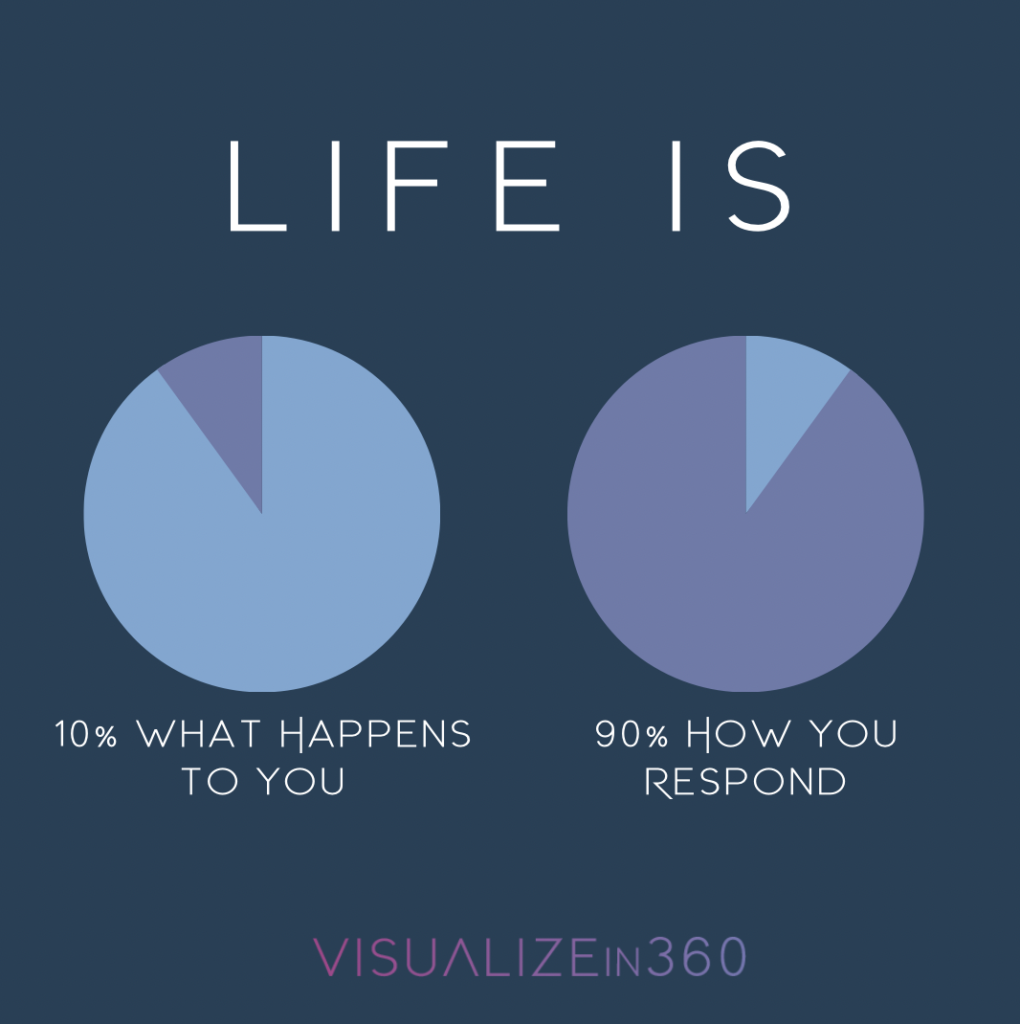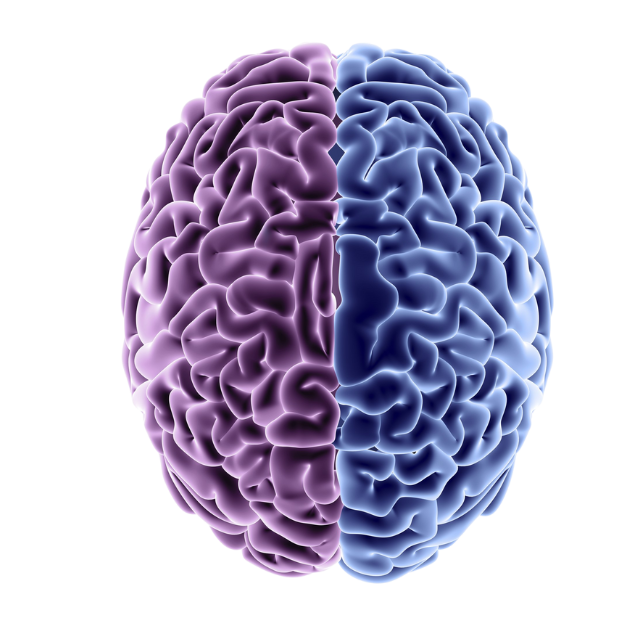What is a Happiness Baseline?
In an ever-changing world, our ability to control our response to external events has become a critical skill to improve mental health and raise baseline happiness levels.
Researchers have estimated that genetics and circumstances aside, 40% of our happiness depends on the decisions we make. That means that 2 people can experience the same type of stressful or wonderful external event and have wildly different responses to it, affecting their outcomes.
According to a study published in the National Institute of Health, external events, such as winning a big lottery or becoming a paraplegic through an accident, on average have little lasting impact on happiness. Within a relatively short period of time, happiness reverts to what researchers call “baseline happiness” levels that existed prior to these events. Another study supported this concept, identifying external events to account for only 10% variation in happiness.
“There really is no fixed reality, no single perception of the world. Just numerous ways of interpreting the world views as dictated by one’s own nervous system and specific environment.”
Deepak Chopra, A Consciousness Based Science
Controlling Response: Increasing Your Happiness Baseline
The world will never cease to be stressful. There are a million things that could happen outside of our control. It’s wasteful to devote precious energy and cognitive resources to trying to anticipate or rid our lives of these stressors. Instead, we can consistently redirect focus only on what’s in our sphere of control.
While we’ve come to associate the term “responsibility” with fault, blame or guilt, Indian mystic and NY Times best selling author, Sadhguru, reminds us of the true meaning of the term: the ability to respond. When something happens, we either have the choice to react compulsively or decide our response. To react compulsively often comes from habit. We might be prone to emotional outbursts, or bitterness or impatience or tend to spend the next few months agonizing over what happened. Deciding our response would mean to take a mental step back and accept that no reaction will change what is already happening. However, investing our energy and attention on what we can control will give us a greater sense of power and stability. This acceptance is not giving up, it’s not welcoming misfortune or condoning mistreatment or unfairness. It’s an active choice to be connected to, rather than isolated from, your deepest truth.
“As long as you think someone or something else is responsible for the way that you are, you cannot become the way you want to be.”
Sadhguru, Inner Engineering
Recognizing you are responsible for anything and everything gives you back your power.
Challenge yourself, even for a few moments each day, to see the world, and your life for exactly what it is, not what you wish it to be. In other words, sit with whatever is happening to you, simply because it’s already happening. It recoups all the precious energy that you’ve given away unintentionally. You disentangle your energy and emotions, tied to people and events across space and time that don’t need or deserve it.
Re-center on what you can control: your proximity, your boundaries, your response. Recognize that you are responsible for however you feel right now. You may have been slighted by another person or had a bout of misfortune, but in the present moment, the past and future don’t exist anywhere else but in the mind. It’s the thoughts you’re having right now that are making you feel uneasy. Studies show that active coping mechanisms that redirect your attention solely on what’s inside your control correlate to improved mental health, cognitive longevity and greater stress resilience.
This doesn’t mean that we have to suppress our emotions. We can allow ourselves to break down, to experience pain, to grieve losses and mourn the people we used to be or wished to become. in fact, we can plan a break-down and give ourselves an allotted amount of time to experience these feelings fully. The difference is, we don’t allow those feelings to define who we are and what we’re capable of moving forward.
What matters most is our rebound rate. How quickly can be bounce back from challenge, set-back or adversity. Instead of ruminating or agonizing over what’s happened, what can we do to make a lasting shift in our energy once we’ve decided we’re ready to move on.
Suggestions for making the immediate shift:
- Turning on a beautiful piece of music
- Watching an engaging or educational show, movie or documentary
- Listening to a favorite podcast
- Getting active through exercise
- Learning a new hobby
- Calling a loved one
- Breath work or meditation
As soon as you shift your frequency, you make yourself available to all of the opportunities that exist, and the potential to create something new in the face of adversity.
Dr. David Hawkins, a leading figure in consciousness research, honored with the title “Foremost teacher of Enlightenment’ conducted 4 decades of kinesiological research that contributed to his book, Power v. Force. Hawkins discusses what he calls attractor fields, which are magnetic resonances of consciousness which draw energy towards us. Elevated emotions (love, joy, gratitude, awe wonder, trust, nurture, create, connect, feel safe, serve etc.) prove to carry significantly higher frequencies compared to negative ones. When we vibrate at a level of love and joy, we attract people, events and circumstances that are in harmony with that state of being. Embodying states of fear, anger, grief or adversity often results in further events and situations that will reinforce that state. Hawkins identifies a ‘genius style of consciousness,’ as someone who is able to consistently access these high-energy attractor patterns regardless of what is happening to them.
One study identified ‘cognitive reappraisal’ to be an important contributor to happiness. It involves changing one’s emotional response by altering the way they perceive the situation. Using cognitive reappraisal strategies correlated to higher levels of well-being and life satisfaction. In his book, Positive Intelligence, Shirzad Chamine, correlates this mental skill with higher-order brain regions that significantly improve one’s ability to overcome challenges. He encourages his readers to mentally turn any sort of set-back or misfortune into an opportunity for growth. Consider, “What can I do right now so that in X amount of time, this set-back can be viewed as my greatest gift?”
Trara Branch, International Mindfulness trainer, reminds us that “What you practice grows stronger.” You can strengthen these positive mental habits and responses over time so there’s less resistance. Train yourself to emit your own frequency, rather than absorbing and reacting to those around you no matter what. You build up the ability to more easily navigate whatever comes your way.
VISUALIZEin360’s Training program
Technology like VISUALIZEin360 becomes a valuable tool in this journey. It provides accessible and practical ways to cultivate states of mindfulness and emotional regulation skills, even in the midst of stress, challenge and uncertainty. It guides users in developing an awareness of their thoughts and feelings, helping them gain better control over their responses to external stimuli.
As we continue to leverage technology to enhance our self-awareness and resilience, we equip ourselves with essential tools for navigating the challenges of the modern era and cultivating a healthier, more balanced life.




